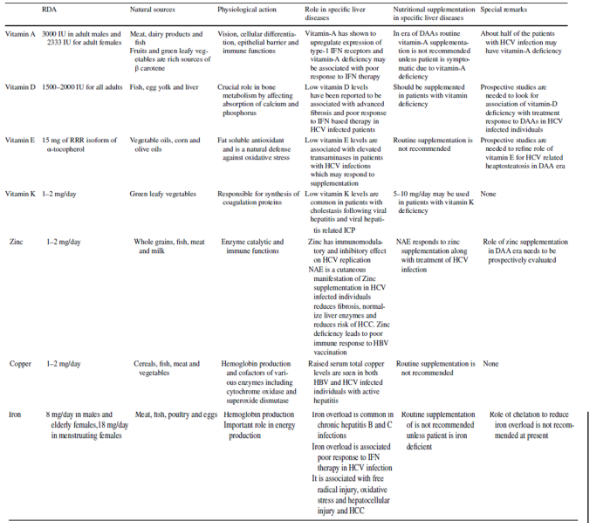The role of nutrition in Hepatitis management
- Introduction
Hepatitis is a condition where the liver becomes inflamed and can be caused by various infectious and non-infectious agents. There are five primary strains of the hepatitis virus, but it can also be caused by other herpes viruses (Barnard, 2021). While all types of hepatitis affect the liver, they differ in how they are transmitted, the severity of the illness, their prevalence in different regions, and the preventive measures that can be taken. Types B and C are particularly concerning as they can lead to chronic conditions, liver cirrhosis, liver cancer, and even death. Globally, around 354 million people are affected by hepatitis B or C, but testing and treatment are often not accessible. However, some forms of hepatitis can be prevented through vaccination. The World Health Organization has developed a comprehensive strategy to combat hepatitis, which includes vaccination, diagnostic tests, medications, and educational initiatives. By implementing this strategy, it is estimated that 4.5 million premature deaths in low- and middle-income countries could be prevented by 2030. The goal is to reduce new hepatitis infections by 90% and fatalities by 65% between 2016 and 2030 (WHO, n.d.)
Hepatitis Basics
In 2019, there were 296 million people living with chronic hepatitis B virus infection and 820,000 deaths. Furthermore, the WHO predicted that in 2019, approximately 1.1 million people will have died due to complications associated with hepatitis B and C, rather than the viruses themselves. These complications include liver cancer, cirrhosis, and other liver infections or chronic conditions. Although hepatitis A and E are acute infections, they can still lead to complications such as permanent liver damage and death (N.N., et al., 2023).
The liver has various functions, including detoxification, bile secretion, immune regulation, and hematopoiesis. Additionally, the liver plays a direct role in the metabolism of macronutrients (carbohydrates, proteins, and fats), as well as the absorption and storage of vitamins and trace elements (Praharaj & Anand, 2022).
Common symptoms of hepatitis include fever, nausea, vomiting, jaundice, fatigue, right-upper-quadrant tenderness, dark urine, and pale stools. Chronic hepatitis can also cause extrahepatic symptoms such as arthritis, polyarteritis nodosa, dermatological eruptions, vasculitis, thyroid inflammation, amenorrhea, gynecomastia, glomerulonephritis, and Sjögren's syndrome.
The following table provides information on the different types of hepatitis viruses and their respective modes of transmission or causes (Barnard, 2021).
Virus Acute/Chronic Transmission Hepatitis A (HAV) Self-limited acute Faecal oral route (Poor hygiene and sanitation) Hepatitis B (HBV) Mild subclinical acute chronic -prenatal and young children Blood and body fluids (sexual contact and intravenous drug use) Hepatitis C (HCV) Chronic Indication for liver transplant Blood Intravenous drug use Vertical transmission Transmission with HIV Hepatitis D (HDV) Can progress to chronic (if HDV is superinfection in person with HBV) Dependent co-infection with HBVBlood and body fluids Hepatitis E (HEV) Self-limited and mild acute Acute onset of liver failure in pregnant woman Faecal – Oral route (contaminated water)Blood transfusions (after organ transplant ) Pigs are the biggest carriers
- Nutritional challenges in patients with hepatitis
Malnutrition is a prevalent issue among individuals with hepatitis, as their altered metabolism and reduced liver function can lead to poor food intake and absorption. Protein Energy Malnutrition (PEM) poses a higher risk of morbidity and mortality for these patients. The severity of malnutrition often corresponds with the extent of hepatic impairment. Studies suggest that malnutrition can negatively affect the effectiveness of treatment and overall prognosis for those with chronic hepatitis. Early screening, prevention, and treatment play a crucial role in improving prognosis and increasing survival rates for these individuals (Praharaj & Anand, 2022).
The liver plays a crucial role not only in the metabolism of macronutrients but also in the metabolism of micronutrients, particularly fat-soluble vitamins. When the liver is affected, it can lead to deficiencies or toxicities of certain elements. Micronutrients such as zinc, selenium, vitamin A, and vitamin B12 are particularly affected. Deficiencies in these micronutrients can result in a weakened immune system or immune response, impaired growth and brain development in children, chronic inflammation, and a poor antioxidant response, leading to an excess of free radicals. Additionally, liver damage can cause an excess of certain micronutrients like iron and copper. An excess of heavy metals, specifically copper and iron, can have severe negative impacts on the body and brain. Iron, in particular, acts as an oxidant and can lead to an excess of free radicals, causing damage to cellular membranes and permanent organ damage. Excessive copper can result in acne, alopecia, strokes, pancreatic dysfunction, and osteoporosis (Gupta, et al., 2019). It is also important to monitor vitamin B12 levels, as adequate levels can help clear HCV from the circulation, but an overload can promote the replication of HCV (Barnard, 2021).
- Recommendations for nutrition
Diet plays a crucial role in the treatment and prevention of further liver damage, making it one of the most effective and cost-effective approaches. However, there are no specific guidelines for managing chronic hepatitis virus, and diet should be tailored to each patient's individual needs, micronutrient status, and overall nutritional status (Rivera, et al., 2023).
For individuals with hepatitis, particularly chronic hepatitis, adopting a healthy lifestyle is essential. This includes avoiding alcohol, maintaining a healthy weight to prevent both obesity and malnutrition, and following a balanced diet that provides adequate macro and micronutrients (WHO, n.d.). It has been observed that patients who are acutely ill often consume fewer nutrients than before their illness, possibly due to the misconception that a low-calorie, low-fat, low-protein, and bland diet is necessary. Unfortunately, this approach can lead to longer hospital stays (Praharaj & Anand, 2022).
Patients with chronic hepatitis, especially HCV, should be regularly screened for metabolic syndrome, as they are often overweight or obese. HCV, particularly genotype-3, has been associated with hepatosteatosis, and individuals with this combination often experience dyslipidemia and insulin resistance, increasing the risk of hepatocellular carcinoma (Praharaj & Anand, 2022).
Protein intake is crucial for patients with any form of hepatitis. A study found that patients with a protein deficiency developed more severe cases of hepatitis B. It is important to note that protein sources should be balanced between animal (providing complete amino acids) and plant (providing incomplete amino acids) protein. Protein is a key nutrient for preventing and treating protein-energy malnutrition (N.N., et al., 2023).
Fat should not be excessively restricted, as it is a major energy source for the liver and plays a role in preventing malnutrition (Chang, et al., 2020). However, a low-fat, low-cholesterol diet is beneficial for patients with Chronic Hepatitis C (CHC). Elevated dietary cholesterol is associated with an increased risk of hepatic steatosis and the progression of hepatitis C-related liver disease. Patients following a low-fat (23% of calories) and low-cholesterol (185 mg/day) diet have shown decreased liver enzyme elevations and improved immunological balance, contributing to reduced liver inflammation in CHC patients (Barnard, 2021).
It is important to note that treatment with Interferon can lead to complications with digestion, resulting in malnutrition due to reduced appetite. Approximately 11% to 29% of patients experience weight loss, and nutritional supplementation may be necessary when using Interferon as a treatment option (Barnard, 2021).
A study examined the impact of various nutrients on hepatitis B virus (HBV) and found the following results:
- Resveratrol, an anti-inflammatory and antioxidant found in grapes, plums, peanuts, apples and blueberries, has been shown to reduce the viral load of HBV. The curative effects are still under investigation.
- Vitamin E, a fat-soluble vitamin found in sunflower seeds, almonds, peanuts, spinach, broccoli and mango, when supplemented at a dose of 600 mg/day for 15 months, has been found to lower the viral load and slow the progression of liver disease. This is due to its ability to reduce the production of pro-inflammatory cytokines.
- Lactoferrin, a protein found in milk, has been found to block hepatitis B and C infection in cell cultures. Camel lactoferrin at a concentration of 0.25 mg/mL and breastmilk extracts have shown inhibitory effects on HBV infection. Lactoferrin works best in the initial phase of the viral cycle by preventing the virus from entering hepatocytes.
- Selenium, found in tuna, sardines, shrimp, beef liver, turkey, chicken and rice, plays a role in antioxidant enzyme activity. Selenium has been found to suppress the virus by activating the tumor protein p53 and p73 genes. Supplementation with selenium has also been associated with a lower risk of developing liver cancer and improved immune response to the HBV vaccine.
- Curcumin, derived from turmeric (Curcuma longa), has antiviral effects by controlling metabolic factors, epigenetic control, activating p53, inhibiting oncogenes, reducing inflammation, and inhibiting viral entry. Curcumin can counteract and prevent viral internalisation during the initial step of an HBV infection.
- Luteolin-7-0-glucoside, found in lettuce leaves, has been shown to interfere with HBV replication and transcription, possibly due to its antioxidant properties. Heat-treated luteolin-7-0-glucoside has been found to increase the proliferation of T, B, and natural killer (NK) cells and decrease macrophage-mediated toxicity.
- Moringa extracts from the Moringa oleifera plant have shown beneficial effects against various viral infections, including SARS-CoV-2. Studies in mice have found that these extracts reduce liver enzymes, albumin levels, and inflammation. They have also been shown to reduce the risk of fibrosis and decrease levels of inflammatory cytokines.
- Chlorogenic acid, found in coffee, has been associated with lower levels of aspartate aminotransferase (ALT) and reduced liver fibrosis in individuals with HBV. It has also been shown to reduce the risk of hepatocellular carcinoma and inhibit HBV replication by inhibiting the replication of hepatitis B antigens. These effects may be due to coffee's anti-inflammatory properties.
- Epigallocatechin-3-gallate, found in extracts from the tea plant Camellia sinensis, has been found to increase antioxidant levels when consumed in 1 to 6 cups per day. It inhibits HBV entry by up to 80% and decreases the expression of HBsAg and HBeAg.
These findings highlight the potential benefits of these nutrients in managing HBV infection (Rivera, et al., 2023).
Chronic viral diseases or infections can lead to micronutrient deficiencies as they disrupt metabolic processes. Malnutrition and a poor diet lacking variety are common causes of micronutrient deficiencies. In the case of HCV, certain micronutrients like copper are utilised by the virus for replication, while micronutrients also play a crucial role in supporting the immune system's defense against HCV. It is important to note that unnecessary supplementation without a proven deficiency can have negative effects (Gupta, et al., 2019).
Vitamin D, a fat-soluble vitamin, should be tested in patients with liver disease as it is often found to be deficient. The liver may have difficulty efficiently converting vitamin D to its active form or storing it. Supplementation with vitamin D has been correlated with improved treatment response in hepatitis (Barnard, 2021).
A review highlighted the four most important trace elements for liver damage: zinc, copper, selenium, and iron (Himoto, 2021).
Praharaj and Anand provided a comprehensive summary of the essential micronutrients and their roles in liver health (Praharaj & Anand, 2022).
Table 2 Role of various micronutrients in viral hepatitis (Praharaj & Anand, 2022)

The gut microbiome plays a crucial role in various bodily functions, including its impact on the liver. Research suggests that probiotic Bacillus spores have the potential to strengthen the intestinal barrier, reducing the transmission of microbial-derived compounds from the intestine and alleviating endotoxemia (Himoto, 2021).
The Guide for Clinicians also highlights several important nutritional considerations:
- Good hygiene and sanitation are essential, as some hepatitis viruses can be transmitted through contaminated water. Boiling and cooking fruits and vegetables at a temperature of at least 85 degrees Celsius can effectively kill the hepatitis A virus (HAV). This is particularly important for individuals who frequently travel. In rural areas, it is crucial to thoroughly wash food with clean and safe water.
- Avoiding consumption of contaminated shellfish and animal products is recommended. HAV can be found in shellfish that are harvested from polluted water sources near the shore, while HEV can be present in game meat or pigs raised in confined environments.
- It is advisable to avoid unnecessary iron supplementation. High-iron foods and supplements contribute to accelerated hepatic iron uptake and oxidative stress, which can worsen the progression of Hepatitis C and increase the risk of hepatocellular carcinoma.
- Coffee consumption has shown potential benefits for individuals with Hepatitis C Virus (HCV). Regular consumption of unsweetened coffee can be a helpful addition to non-alcoholic fatty liver disease (NAFLD) therapy. It has been associated with reducing oxidative DNA damage, eliminating virus-infected cells, stabilising chromosomes, and decreasing fibrosis (Barnard, 2021)
5. Conclusion
Hepatitis is a multifaceted disease with diverse transmission routes and strains. The liver plays a crucial role in the metabolism of both macronutrients and micronutrients, contributing to the maintenance of nutritional balance. However, when the liver is negatively affected, it can lead to malnutrition and deficiencies in micronutrients. While there is no specific "liver diet," adopting a healthy lifestyle that includes adequate intake of macronutrients and micronutrients can support recovery and protect against further liver damage, fibrosis and carcinoma. It is important to note that micronutrient supplementation should only be considered if a deficiency has been confirmed, as excessive supplementation can promote the replication of hepatitis viruses.
References
Barnard, N. D., 2021. PCRM'S Nutrition Guide for Clinicians. [Online]
Available at: https://nutritionguide.pcrm.org/nutritionguide/view/Nutrition_Guide_for_Clinicians/1342052/all/Viral_Hepatitis?refer=true
[Accessed 4 December 2023].
Chang, Y. et al., 2020. Role of nutritional status and nutritional support in outcome of hepatitis B virus-associated acute-on-chronic liver failure. World Journal of Gastroenterology, 26(29), pp. 4288-4301.
Gupta, S., Read, S. A., Shackel, N. A. & Hebbart, L., 2019. The Role of Micronutrients in the Infection and Subsequent Response to Hepatitis C Virus. Cells, 8(6).
Himoto, T., 2021. Diet and Nutrition for Hepatitis. Nutrients, Volume 13.
N.N., J., Imamova , A. O. & Kobilzhonova , S. R., 2023. THE ROLE OF NUTRITION IN THE MANAGEMENT OF CHRONIC HEPATITIS. EUROPEAN INTERNATIONAL JOURNAL OF MULTIDISCIPLINARY RESEARCH, 3(2), pp. 28-34.
Praharaj, D. L. & Anand, A. C., 2022. Nutrition in Viral Hepatitis. Current Hepatology Reports, 7 December, Volume 22, pp. 9-23.
Rivera, I., Jose-Abregoa, A., Torres-Reyes, L. A. & Roman, S., 2023. Anti-hepatitis B virus activity of food nutrients and potential mechanisms of action. Annals of Hepatology, Volume 28, pp. 1665-2681.
WHO, n.d. World Health Organization. [Online]
Available at: https://www.who.int/health-topics/hepatitis#tab=tab_1
Please see foto’s for table under micronutrients


If you liked this post you may also like




